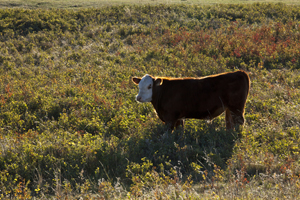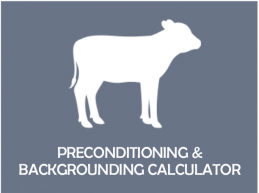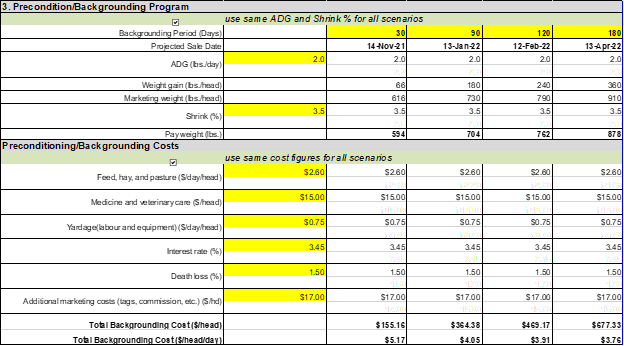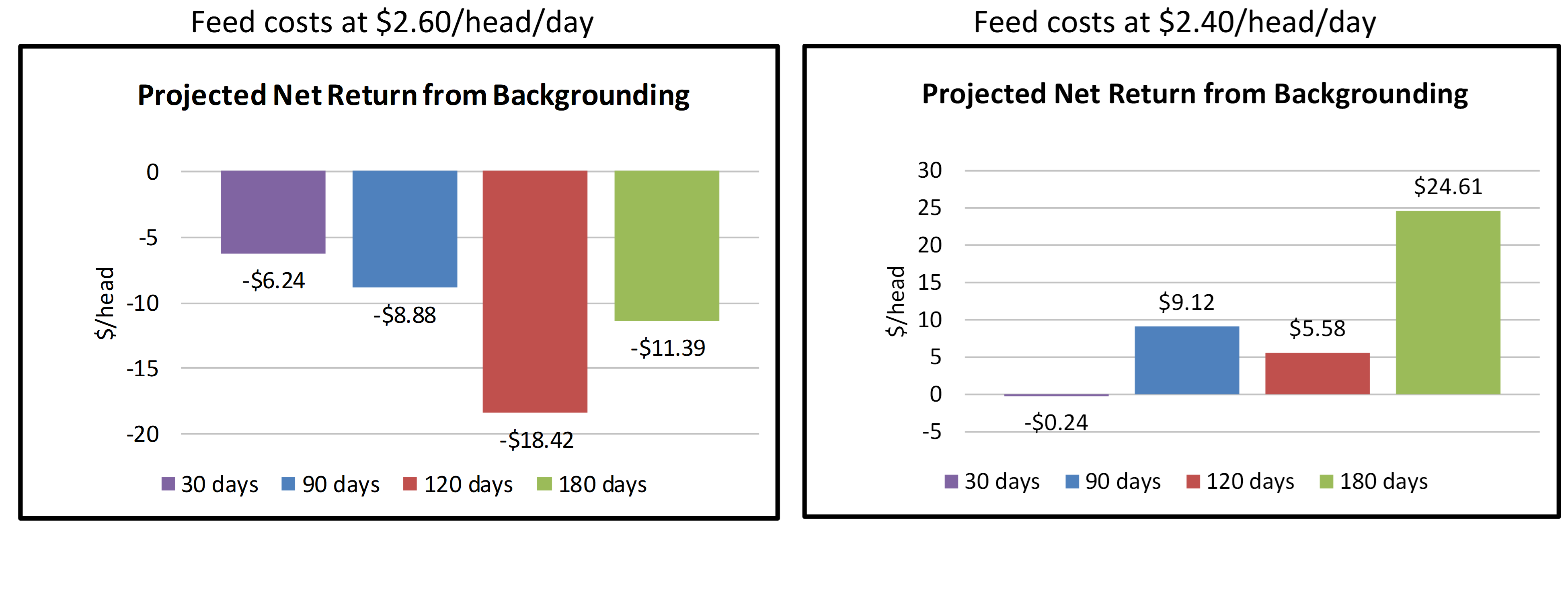What’s the most profitable post-weaning choice for your calves? Try our updated calculator!

Drought conditions across the country this year remind us of the importance of a drought management plan. Diversifying a cow-calf operation with a backgrounding enterprise could be part of a drought mitigation strategy as backgrounded cattle can be sold or move to a feedlot to free up feed supplies or pasture for the cow herd. While backgrounding may not be an option of many producers this year due to tight feed supplies, now might be a good time to start thinking if this strategy fits your operation.
The Beef Cattle Research Council’s Preconditioning and Backgrounding Calculator (download the .xlxs file) is designed to identify economic opportunities and risks from preconditioning or backgrounding cattle. The calculator has recently been updated to allow more flexibility in price projections. The cattle price index database embedded in the calculator is updated with the latest five-year (2016-2020) provincial data from British Columbia to Quebec.
Producers can use the calculator to project net returns from preconditioning or backgrounding compared to selling cattle at weaning, as well as to identify the production cost, cattle performance, or cattle price scenarios that could potentially result in positive net returns.
How to Use the Calculator
The net return from preconditioning or backgrounding, which is the difference between the gross revenue from selling cattle at weaning compared to gross revenue after a backgrounding period, will be determined based on the user’s projections on calf and feeder prices, sale weight at weaning, the length of backgrounding period, cattle performance, and backgrounding costs. Producers can adjust these variables to reflect their own production systems and market outlook.
For example, a producer in Alberta is planning to wean calves at 550 lbs in mid-October.

Based on the projected calf price ($207/cwt in mid-October) and shrink (5%) entered, the gross revenue at weaning is calculated ($1,082/head).

For the precondition or backgrounding scenarios, producers can analyse up to four backgrounding periods (for example 30, 90, 120 and 180 days). By using the check box, users can choose to use the same animal performance numbers (ADG and shrink %) and cost numbers (feed, medicine and veterinary care, yardage etc.) for all feeding periods, or to use different numbers for different periods. Based on the cost figures entered, total backgrounding cost for each scenario is calculated with cost composition presented in the pie charts.
The final step is a price projection for the backgrounded cattle. As cattle prices are typically unknown when making backgrounding decisions, the calculator provides seasonally adjusted sale prices based on current prices and historical price seasonality. For example, if the most current cattle prices known are the July prices, a seasonally adjusted price for the sale months are calculated based on the July prices entered for each weight categories, and the five-year price index embedded in the calculator. Users can choose to use these seasonally adjusted prices as sale price or put in their own projections. A link to the Canfax price projection app is provided for more comprehensive price projections and the latest cattle price insurance information.
The results show the potential net return from backgrounding compared to selling at weaning. For this example, the net returns are negative for all scenarios, suggesting it is better off selling cattle at weaning. The calculator also estimates the breakeven price for the backgrounding cattle. For this example, breakeven prices range from $200 to 208/cwt.
Users can identify the production cost, cattle performance, or cattle price scenarios that could potentially result in positive net returns. For instance, at what feed cost level would backgrounding make economic sense? In this example, if feed costs can be reduced from $2.60 to $2.40/head/day (while keeping all other variables unchanged) most of feeding periods would have positive net returns.
Please remember that the purpose of the example above is to demonstrate how to use the calculator. Every operation is different, therefore, each operation needs to use their own specific values when making backgrounding decisions. In addition to cattle prices, animal performance and production costs, it is also critical to consider the additional labour and facilities required for backgrounding, feed availability and tax implications. As there are many moving parts affecting precondition or backgrounding decisions, no one strategy is most profitable every year. Producers should adjust their program to changes in feed situation, weather, and market conditions to achieve the best return.
Click to download calculator [.xlxs file | 149kb]
Click here to subscribe to the BCRC Blog and receive email notifications when new content is posted.
The sharing or reprinting of BCRC Blog articles is welcome and encouraged. Please provide acknowledgement to the Beef Cattle Research Council, list the website address, www.BeefResearch.ca, and let us know you chose to share the article by emailing us at [email protected].
We welcome your questions, comments and suggestions. Contact us directly or generate public discussion by posting your thoughts below.




